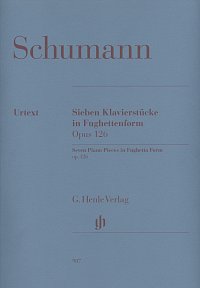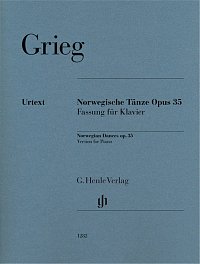Rachmaninov: Études-Tableaux (urtext) / piano
| Publisher | G.Henle Verlag |
| Genre: | classical & sacret |
| Arrangement: | piano |
| Cast: | solo |
| Difficulty: | Advanced |
| Format: | book - paperback |
| Series: | Urtext |
Parameters
| Product code: | HN1202 |
| Composer: | Rachmaninoff, Sergei |
| No. of songs: | 17 |
| Pages: | 104 |
| Language: |
English
German French |
| Size: | 24 x 31 cm |
| ISMN: | 9790201812021 |
| Weight: | 456 g |
Songlist (17)
- Étude-Tableau f minor op. 33
- Étude-Tableau C major op. 33
- Étude-Tableau e flat minor op. 33
- Étude-Tableau E flat major op. 33
- Étude-Tableau g minor op. 33
- Étude-Tableau c sharp minor op. 33
- Étude-Tableau c minor op. 39
- Étude-Tableau a minor op. 39
- Étude-Tableau f sharp minor op. 39
- Étude-Tableau b minor op. 39
- Étude-Tableau e flat minor op. 39
- Étude-Tableau a minor op. 39
- Étude-Tableau c minor op. 39
- Étude-Tableau d minor op. 39
- Étude-Tableau D major op. 39
- Étude-Tableau c minor (op. 33)
- Étude-Tableau d minor (op. 33)
Product description
With his Études-Tableaux Rachmaninov continued the path already taken by Chopin and Liszt in their concert etudes: the most demanding technical tasks are presented in the form of expressive character pieces. Rachmaninov composed two cycles, each of which originally contained nine Études-Tableaux; however, he removed three of them shortly before the publication of Opus 33. Several posthumous editions later reversed this decision. This edition, however, follows the exact structure with six pieces as Rachmaninoff set it for publication. The two surviving etudes that were not originally published are reprinted in the appendix of the Urtext edition.
Sergei Vasilievich Rachmaninoff (1873-1943) Russian composer, pianist and conductor. He played the piano from the age of five. After a short time his musical talent became apparent and in 1882, at the age of nine, he entered the St Petersburg Conservatory. At the age of twelve he moved to the Moscow Conservatory. He took his exams at the conservatory a year early, and the examining committee was so impressed with his performance that he was awarded the Great Gold Medal of the Moscow Conservatory, only the second time in its history that this had happened. He was one of the last of the Russian Romantic composers, and because he lived at the turn of the century, he was influenced by both old and new creative styles. Some of his most famous works include his Symphony No. 2, Piano Concerto No. 2, Piano Concerto No. 3 and Piano Concerto No. 4.










